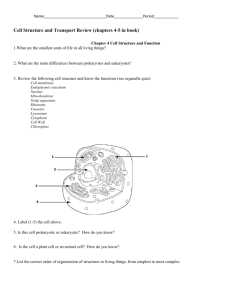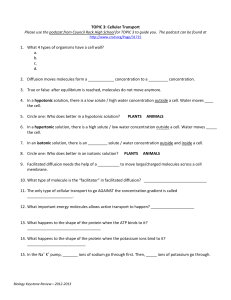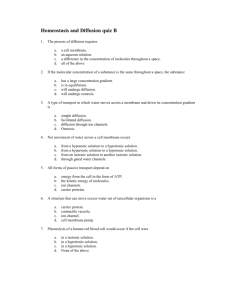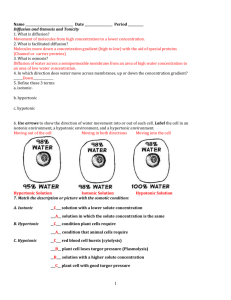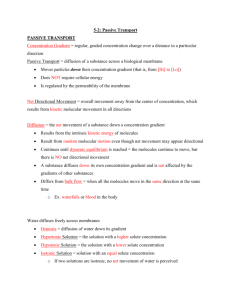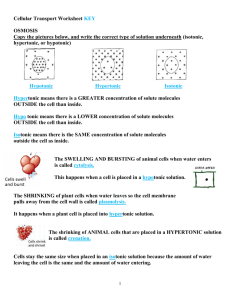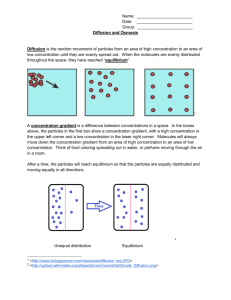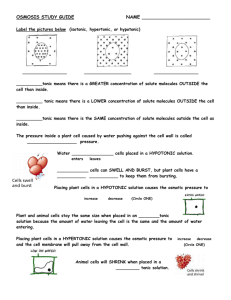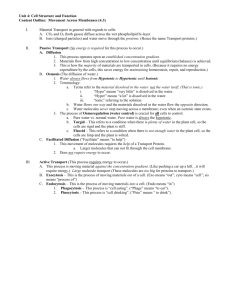OsmosisHW KEY
advertisement
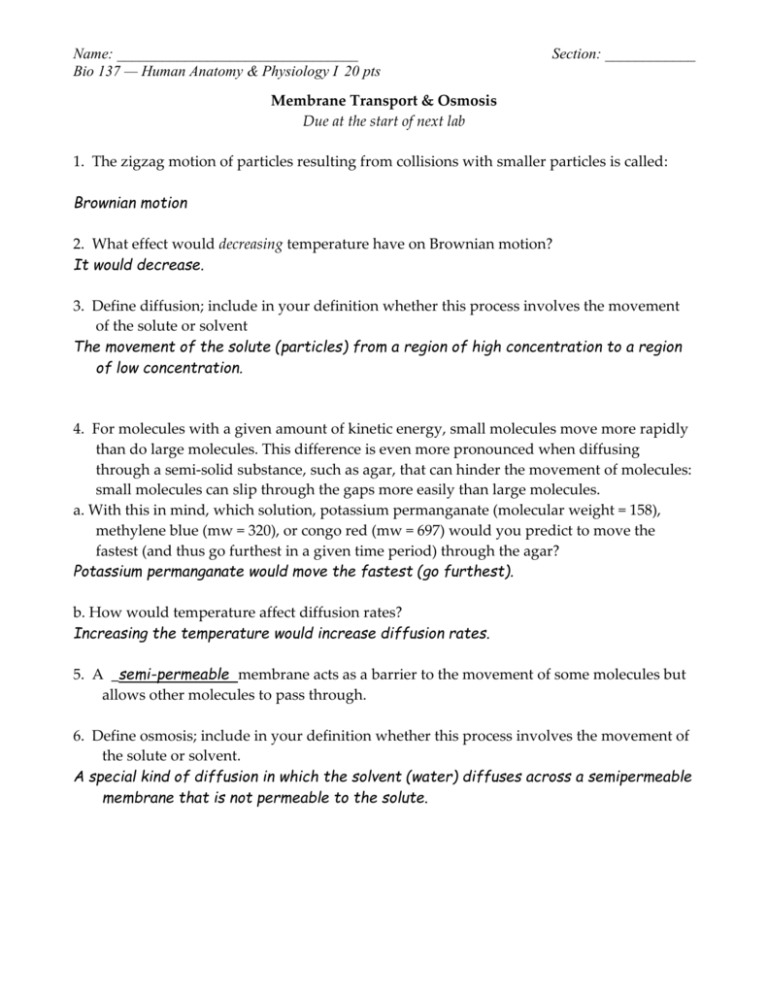
Name: ________________________________ Bio 137 — Human Anatomy & Physiology I 20 pts Section: ____________ Membrane Transport & Osmosis Due at the start of next lab 1. The zigzag motion of particles resulting from collisions with smaller particles is called: Brownian motion 2. What effect would decreasing temperature have on Brownian motion? It would decrease. 3. Define diffusion; include in your definition whether this process involves the movement of the solute or solvent The movement of the solute (particles) from a region of high concentration to a region of low concentration. 4. For molecules with a given amount of kinetic energy, small molecules move more rapidly than do large molecules. This difference is even more pronounced when diffusing through a semi-solid substance, such as agar, that can hinder the movement of molecules: small molecules can slip through the gaps more easily than large molecules. a. With this in mind, which solution, potassium permanganate (molecular weight = 158), methylene blue (mw = 320), or congo red (mw = 697) would you predict to move the fastest (and thus go furthest in a given time period) through the agar? Potassium permanganate would move the fastest (go furthest). b. How would temperature affect diffusion rates? Increasing the temperature would increase diffusion rates. 5. A _semi-permeable membrane acts as a barrier to the movement of some molecules but allows other molecules to pass through. 6. Define osmosis; include in your definition whether this process involves the movement of the solute or solvent. A special kind of diffusion in which the solvent (water) diffuses across a semipermeable membrane that is not permeable to the solute. Bio 137 — Human Anatomy & Physiology I Page 2 7. Record the results from your instructor’s demonstration of osmosis in the table below: Sucrose Concentration in Sucrose Concentration in Dialysis Bag Beaker The bag solution is ___* to the beaker solution. Weight at Weight at Change in Start End Weight 40% 0% hypertonic Should gain 0% 40% hypotonic Should lose 0% 0% isotonic No change * isotonic, hypotonic, or hypertonic 8. Which bag(s) did you predict should gain weight and which should lose weight? As above, the hypertonic bag should gain weight and the hypotonic bag should lose. 9. Do the observed results match your prediction? If not, what are some possible reasons? Anything reasonable…… A B 10. The two artificial cells shown above are separated by a selectively permeable membrane that is permeable to water but impermeable to sodium chloride (NaCl). The solution inside cell A contains a 30% NaCl solution, while cell B contains a 20% NaCl solution. a. Cell A is hypotonic / hypertonic / isotonic (circle one) compared to cell B. b. Draw an arrow on the diagram to indicate in which direction water would move. Water would move to the hypertonic cell, A. 11. If you were hospitalized and needed to be given fluids intravenously (IV), would you want that fluid to be hypertonic to your cells? Explain what would occur if you were to receive such a fluid. No, an IV fluid should be isotonic to the cells/tissues. A hypertonic IV solution would cause water to leave the cells (crenation).
